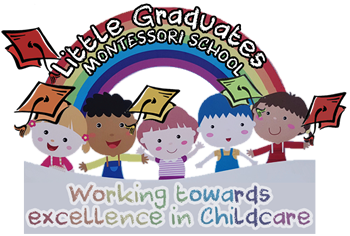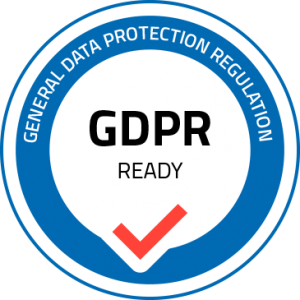This website uses cookies so that we can provide you with the best user experience possible. Cookie information is stored in your browser and performs functions such as recognising you when you return to our website and helping our team to understand which sections of the website you find most interesting and useful.
Children’s records
10.6 Children’s records
Policy statement
LGMS have record keeping systems in place (Tapestry) that meet legal requirements; the means LGMS use to store and share that information takes place within the framework of the General Data Protection Regulations (GDPR) (2018) and the Human Rights Act (1998).
This policy and procedure should be read alongside LGMS Privacy Notice, Confidentiality and Client Access to Records Policy and LGMS Information Sharing Policy.
Procedures
If a child attends another setting, LGMS establishes a regular two-way flow of appropriate information with parents and other providers. Where appropriate, LGMS will incorporate comments from other providers, as well as parents and/or carers into the child’s records.
We keep two kinds of records on children attending LGMS setting:
Developmental records
- These include observations of children in the setting, photographs, video clips and samples of their work, and summary developmental reports.
- These are kept on our Tapestry recording system [either on the tablet for each classroom or laptop) and can be accessed, and contributed to, by our staff and will eventually be accessible to parents via a secure password.
Personal records
These may include the following (as applicable):
- Personal details – including the child’s registration form and any consent forms.
- Contractual matters – including a copy of the signed parent contract, the child’s days and times of attendance, a record of the child’s fees, any fee reminders or records of disputes about fees.
- Child’s development, health and well-being – including a summary only of the child’s EYFS profile report, a record of discussions about every day matters about the child’s development health and well-bring with the parent.
- Early Support – including any additional focussed intervention provided by LGMS setting (e.g. support for behaviour, language or development that needs an SEN action plan) and records of any meetings held.
- Welfare and child protection concerns – including records of all welfare and protection concerns, and LGMS resulting action, meetings and telephone conversations about the child, an Education, Health and Care Plan and any information regarding a Looked After Child.
- Correspondence and Reports – including a copy of the child’s 2 Year Old Progress Check (as applicable), all letters and emails to and from other agencies and any confidential reports from other agencies.
- These confidential records are stored in a lockable file or cabinet, which is always locked when not in use and which [our manager keeps/I keep] secure in an office or other suitably safe place.
- LGMS read any correspondence in relation to a child, note any actions and file it immediately
- LGMS ensure that access to children’s files is restricted to those authorised to see them and make entries in them, this being [our manager, deputy or designated person for child protection, the child’s key person, or other staff as authorised by our manager and other staff as authorised by me].
- LGMS may be required to hand children’s personal files to Ofsted as part of an inspection or investigation process; or to local authority staff conducting a S11 audit, as long as authorisation is seen. LGMS ensures that children’s personal files are not handed over to anyone else to look at.
- Parents have access, in accordance with LGMS Privacy Notice, Confidentiality and Client Access to Records Policy, to the files and records of their own children, but do not have access to information about any other child.
- LGMS will not discuss personal information given by parents with other members of staff, except where it affects planning for the child’s needs. LGMS staff induction program includes an awareness of the importance of confidentiality in the role of the key person.
- LGMS retain children’s records for three years after they have left the setting; except records that relate to an accident or child protection matter, which are kept until a child reaches the age of 18 years. These are kept in a secure place.
Archiving children’s files
- When a child leaves LGMS setting, LGMS remove all paper documents from the child’s personal file and places them in a robust envelope, with the child’s name and date of birth on the front and the date they left. LGMS seals this and place it in an archive box, stored in a safe place (i.e. a locked cabinet) for a minimum of three years. After three years it is destroyed.
- If data is kept electronically it is encrypted and stored as above.
- Where there were s.47 child protection investigations, LGMS mark the envelope with a star and archive it for 25 years.
- LGMS store financial information according to LGMS finance procedures.
Other Records
- LGMS keep a daily record of the names of the children we are caring for, their hours of attendance and the names of their key person.
- Students on Pre-school Learning Alliance or other recognised qualifications and training, when they are observing in the setting, are advised of LGMS Confidentiality and Client Access to Records Policy and are required to respect it.
Legal framework
- General Data Protection Regulations (GDPR) (2018)
- Human Rights Act (1998)
Further guidance
- Information sharing: Advice for practitioners providing safeguarding services to children, young people, parents, and carers (2015)
|
This policy was adopted by |
LGMS | (name of provider) |
| On | 1st September 2022 | (date) |
| Date to be reviewed | September 2023 | (date) |
| Signed on behalf of the provider | Shauna Fosker | |
| Name of signatory | Shauna Fosker | |
| Role of signatory (e.g. chair, director or owner) | Senior Manager | |



